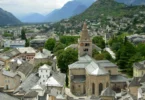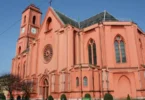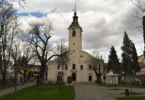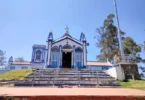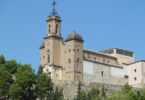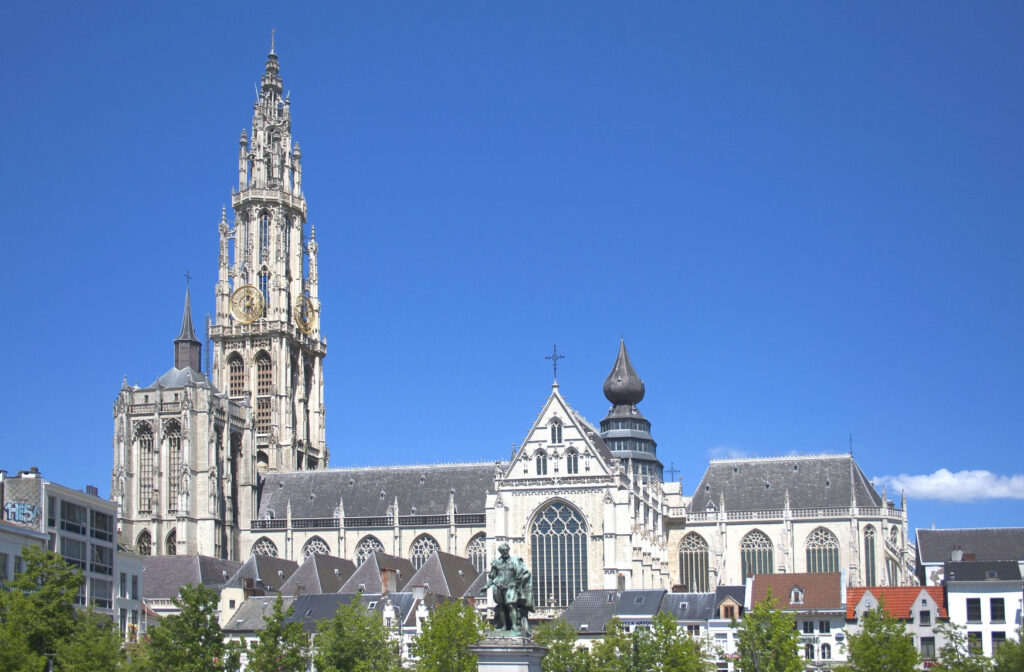
Introduction
The Cathedral of Our Lady (Dutch: Onze-Lieve-Vrouwekathedraal) is a Roman Catholic cathedral in Antwerp, Belgium. Today’s seat of the Diocese of Antwerp started in 1352 and, although the first stage of construction was ended in 1521, has never been ‘completed’. It was constructed in the Gothic style by architects Jan and Pieter Appelmans. It contains a number of significant works by the Baroque painter Peter Paul Rubens, as well as paintings by artists such as Otto van Veen, Jacob de Backer and Marten de Vos. The cathedral is the largest Gothic church in Belgium, with its tower rising 123 meters (404 ft) over the city.
The belfry of the cathedral is included in the Belfries of Belgium and France entry in the list of UNESCO World Heritage Sites.
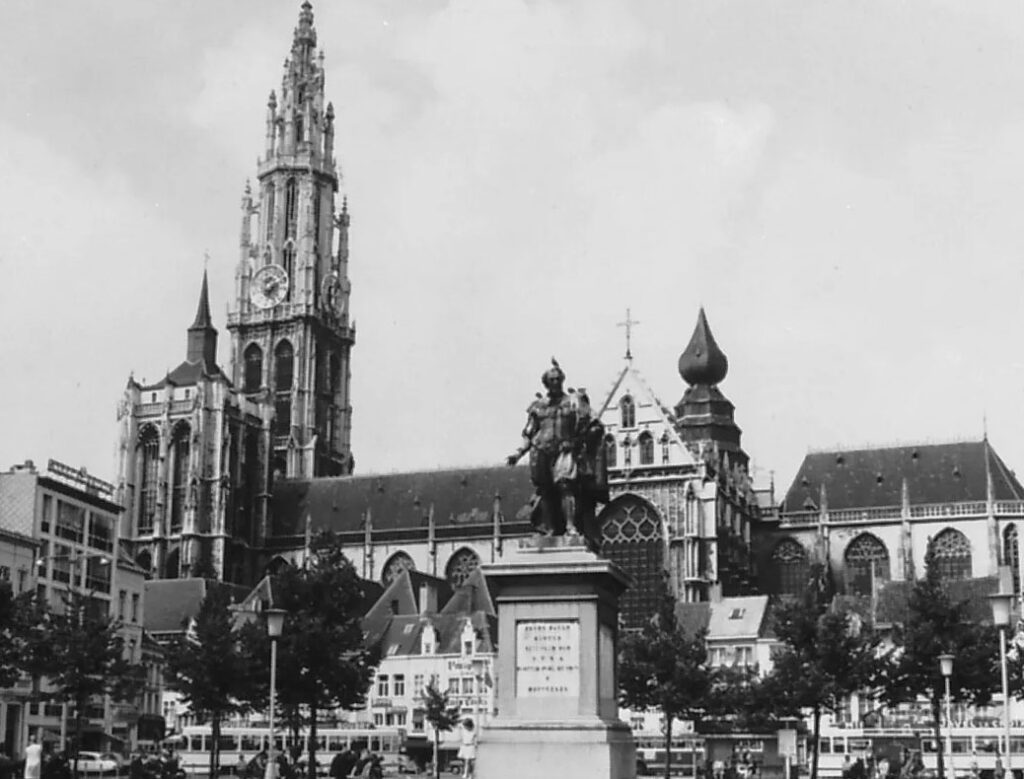
The first Christian missionaries arrived in the 7th century. The first parish church dedicated to Saint Peter and Saint Paul was constructed in the current Sint Michielsstraat. After the Viking raids in 836, the church was damaged and restored, and subsequently dedicated to Saint Michael. In the 10th century, a group of 12 secular canons were connected to this church. They would dedicate all of their time to the Liturgy of the Hours, and mainly opposed the beliefs of the established Roman Catholic Church. Upon hearing of their dissident behavior, the bishop of the Roman Catholic Archdiocese of Cambrai (to which Antwerp belonged at the time) then sent Norbert of Xanten to discipline them. In 1124, Norbert of Xanten convinces 4 of the secular canons to start a norbertine abbey and thus the parish church becomes a monastery church, known as St. Michael’s Abbey. The 8 other secular canons prefer to keep their freedom and move to a different location, a chapel dedicated to Our Lady, the Virgin Mary.
This chapel becomes Antwerp’s new parish church, and is located between the Saint Michael residential area, and an older settlement around the area of Het Steen.
The building’s history starts in the 12th century, with a Romanesque church, of which you can still find traces in the Cathedral. The current structure is the result of various construction phases between 1352 and 1521, the year in which a megalomaniac expansion programme began. Unfortunately, the building was gutted by fire in 1533. In 1559, the former parish church became the cathedral of the new Diocese of Antwerp.
Unfortunately, this ‘promotion’ marked the start of a run of bad luck. During this period, Antwerp suffered as a result of the war of the Netherlands independence from Spain. However, the Counter-Reformation drew some of the greatest artists of that era to Antwerp. Under Peter Paul Rubens’s lead, the Cathedral was restored to its former glory. At the end of the 18th century, the Cathedral was pillaged again under French rule. It was a close call: the French even gave orders that the Cathedral be razed to the ground.
Fortunately, the decision was reversed under Napoleon. It wasn’t until the emperor’s abdication that many of the major masterpieces found their way back to the Church of Our Lady, which had been stripped of its status of cathedral in the meantime. When the Diocese of Antwerp was restored in 1962, the Cathedral became a cathedral again.
Our Lady Church

Becoming more popular, the chapel is demolished and replaced by a much bigger romanesque church. The three-aisled nave corresponded in width to the cathedral’s current central aisle, the inner and partly the middle aisles. The cloverleaf-shaped eastern section with a full aisle had a width of no less than 42 m. In 1294, the church gets a novum opus extension, indicating the first signs of gothic architecture.
Architecture of Cathedral Of Our Lady, Antwerp, Belgium

In 1352, the construction was begun for a new church, which would become the largest Gothic church in the Netherlands. Originally it was the intention to provide the church with two towers of equal height.
In 1521, after nearly 170 years, the Church of Our Lady was completed. After the new church was gutted by fire in large part during the night of the 5-6th of October 1533, all energy and means went to its reconstruction. The completion of the second tower was delayed, which in fact led to its abandonment. Moreover, only in 1559 was it made the Diocese church of Antwerp and thus a cathedral, though again it lost this title from 1801 until 1961 because the Diocese was dissolved during this period. As an architectural work, constructed primarily of raw and white natural stone, the Cathedral of Our Lady is an impressive example of Brabant Gothic. Belonging to the most important characteristics of it are a decorative integration of architectural and sculptural art, a sober and open interior architecture that is based upon a complex construction, spatial and vertical effects, and a subtle play of light and shadow. The church has a high northern tower and a lower southern one, an octagonal lantern, or crossing tower, with an onion-shaped top, seven aisles, a crossing aisle, a choir, an ambulatory choir and five choir chapels and six side-oriented chapels. A century was spent on the construction of the northern tower, by which its style evolves from a robust High Gothic one below to a refined Late Gothic above. The lower portions are heavy and square, with very few ornaments, while higher up the tower is increasingly more richly decorated and airy. The spire looks like stone lacework.
The fire of 1533 is by far not the only disaster by which the cathedral was troubled. Merely 33 years later, during the Iconoclasm of 20 August 1566, the Protestants destroyed a large part of the precious interior. In 1581, when Antwerp came under Protestant rule, again a number of art treasures and furniture were destroyed, removed or sold. Only after 1585 with the restitution of the Roman Catholic authority did peace return. Two centuries later another disaster struck. In 1794, the French revolutionaries took over our regions, by which the Cathedral of Our Lady was plundered and severely damaged. Around 1798 the French even toyed with the idea of leveling the building. However, after each blow, the Cathedral knew how to restore itself. In 1816 various important works of art, amongst which three masterpieces by Rubens, returned from Paris. Spread out over the 19th Century the church was completely restored and refurbished. Between 1965 and 1993 a complete restoration once again took place.
In the Cathedral of Our Lady four masterpieces by Peter Paul Rubens are to be found: The Raising of the Cross (1609-1610), Triptych with the Resurrection of Christ (1611-1612), Descent from the Cross (1611-1614) and Assumption of the Virgin (1625-1626). Throughout the Cathedral several works by Baroque artists such as Otto van Veen, Maerten de Vos, Hendrick van Balen I, Cornelis Schut I and Artus Quellinus II are to be found.
Eight monumental altarpieces from the collection of the Royal Museum of Fine Arts Antwerp (KMSKA) are the showpieces of the exhibition Reunion. From Quinten Metsijs to Peter Paul Rubens. Masterpieces from the Royal Museum reunited in the Cathedral in the Antwerp Cathedral of Our Lady. The exhibition was supposed to end in November 2009 but it has been extended until the reopening of the KMSKA in 2017.
Art of Cathedral
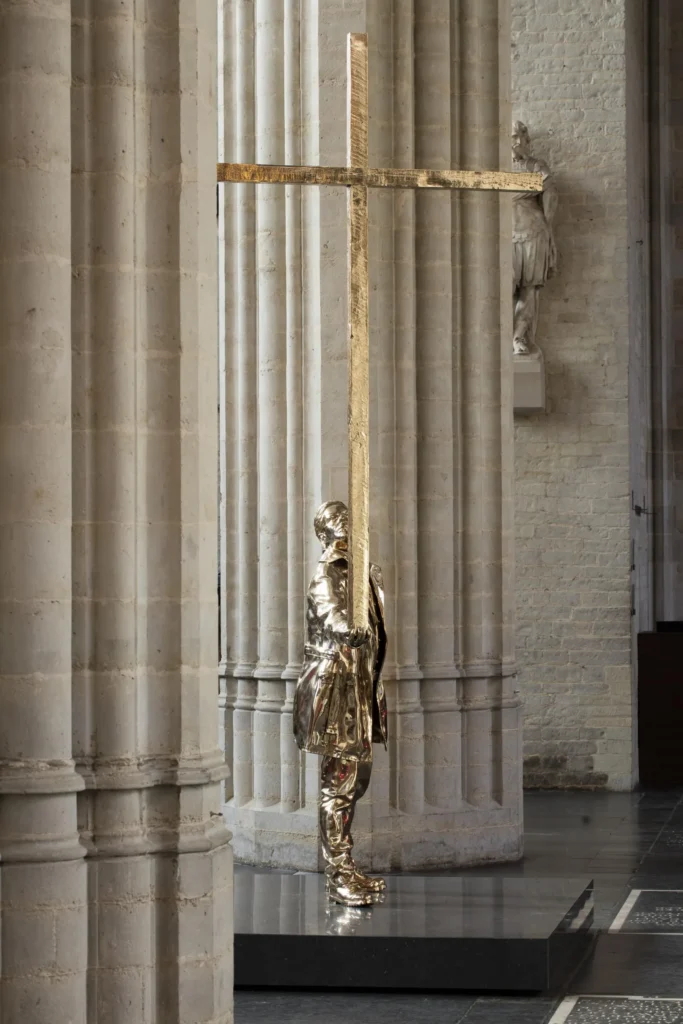
The sixteenth-century Cathedral of Our Lady in Antwerp, Belgium, home to Peter Paul Rubens’s famous Elevation of the Cross and Descent from the Cross, is now also home to a bronze sculpture by contemporary artist Jan Fabre, called The Man Who Bears the Cross. It is a self-portrait of the artist surveying a large cross that he balances in the palm of his hand.
Open ended rather than declamatory, The Man Who Bears the Cross was originally shown in wax in the 2014 exhibition “ The Spiritual Skeptic “ at Antwerp’s At The Gallery. There it was spotted by parish priest Bart Paepen, who had been “looking for a way of making a connection between the world of the church and that of contemporary art” for some time, and thought this piece would be a perfect fit for Our Lady. The last time the cathedral acquired a new piece of art was in 1924.
When one thinks of “bearing the cross,” a hefty, crushing burden likely comes to mind, flashes of Christ on the road to Calvary, where the cross is borne on the back. In Christian parlance, those who “bear the cross” are those who willingly take on the personal suffering associated with living out the gospel.
But in The Man Who Bears the Cross, “bearing the cross” has a different connotation. It is borne on the palm—held out and lifted up before view, an object of consideration. It’s still weighty, but that weight is negotiated through a balancing act. The sculpture visualizes an internal process that everyone must undergo: deciding whether to accept Christ and him crucified, or to reject him. Some people spend most of their lives weighing the two options, not ready to commit to either yea or nay. Some don’t even see the options as worth handling. Some perhaps jump on the Christian bandwagon too quickly without first counting the cost.
The Man Who Bears the Cross in the Cathedral of Our Lady is the first edition of eight. Another cast is on display through October 2 at the Forte di Belvedere in Florence, Italy, as part of an exhibition called “Spiritual Guards.”
Musical Life of Cathedral
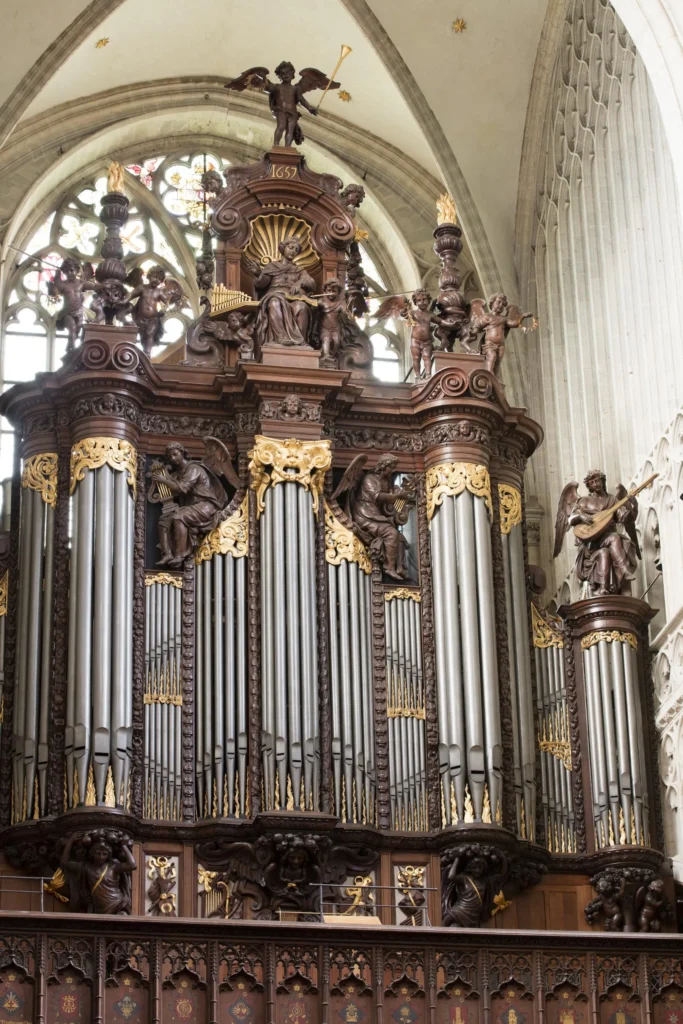
At the beginning of the 15th century, the cathedral’s choir started developing an active musical life, and as a result, the cathedral’s importance in the history of music soon soared. Johannes Ockeghem, one of the most important composers of the 15th century, served here as a vicar-singer in 1443, and so did Jacob Obrecht between 1492 and 1497. Sixteenth-century choirmasters included Antoine Barbe, Geert van Turnhout, Séverin Cornet, and Andreas Pevernage. Organists who worked at the cathedral include Henry Bredemers (1493–1501), who went on to become a teacher to Philip the Handsome’s children and the renowned English composer John Bull (1615–1628), who fled to Flanders from his home country escaping justice. From 1725 to 1731 Willem de Fesch served as Kapelmeester, followed from 1731 to 1737 by Joseph-Hector Fiocco, and from 1737 by André-Joseph Blavier. Lesser known but locally important figures, such as Jacobus Barbireau and Andreas Pevernage, also worked at the cathedral.
Feast Day
Feast day : August 15th
Church Opening Time
Monday – Friday: 10:00-05:00
Saturday: 10:00-03:00
Sunday: 01:00-05:00
Mass Timing
Monday to Friday: 11 a.m., 2.15 and 3.45 p.m.
Saturdays : 11.00 am and 2.15 pm.
Sundays and Public holidays : 1.15 and 3 p.m
Contact Info
Address :
Groenplaats 21, 2000 Antwerp
Tell. +32 (0)3 213 99 51
Accommodations
Connectivities
Airway
Antwerp Airport (ANR) to Cathedral Of Our Lady, Antwerp Distance 36km(23 min).
Railway
Antwerpen-Central Train Station to Cathedral Of Our Lady, Antwerp Distance 12 min (2.8 km) via Rubenslei


